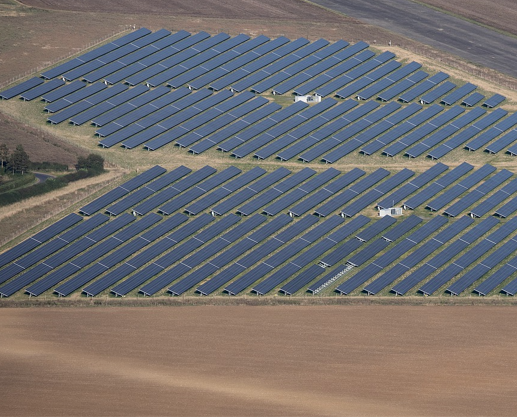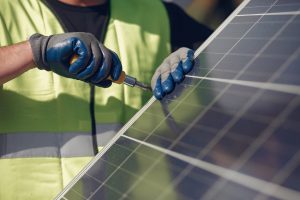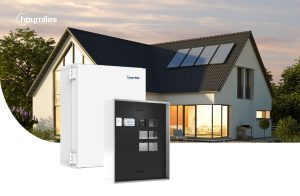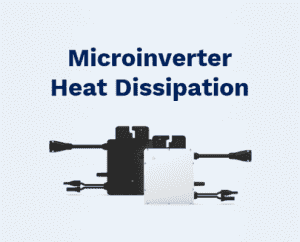How Do Solar Panels Work?
There’s no way to protect the climate without dramatically changing how we produce and use electricity.
Renewable energy sources like solar radiation, wind, tidal power, and biomass can help us to seriously minimize carbon emissions and put humanity on course for a sustainable future, and solar energy is currently having its moment in the spotlight; by the end of Q2 2021, the U.S. had enough solar panels to power 18.9 million homes. To learn more about the benefits of using solar panels, read our ‘Why go solar?’ article.
As the pressure to fight climate change mounts worldwide, with more and more nations making serious efforts to achieve carbon neutrality, the demand for renewable energy is snowballing, and its use increased by 3 percent in 2020.
WHAT IS SOLAR ENERGY?
Solar energy—also known as solar radiation—is the radiant light and heat that’s emitted by the sun, which is a natural nuclear reactor. Solar energy has been used for thousands of years in many ways throughout the world.
While we’re familiar with the more “modern” use case of harnessing it with solar panels to generate electricity, other key uses include:
- Solar cookers
- Heating water
- Crop cultivation
- Seawater desalination
Solar energy is emitted as tiny bits of energy known as photons, and they travel almost 150 million kilometers from the surface of the sun to the surface of the Earth where they provide us with heat and light.
Although many people know this, most don’t realize that the sun produces a huge surplus of these photons, enough in a single hour, in fact, to theoretically generate enough solar energy to power the planet for an entire year.
It’s for this reason that researchers and scientists are so keen to press ahead with innovations in the field of solar energy harvesting and renewable energy storage; in the U.S. alone, nearly 40% of all CO2 emissions come from burning fossil fuels.
While we’ve long since known solar energy to be a valuable renewable energy source, it’s only thanks to recent innovations in solar technology that it’s starting to become more of a viable solution to the climate challenge.
Today, solar panels (also known by their technical name “photovoltaic solar panels”) are the primary way in which the sun’s energy is captured and turned into a usable flow of electricity.
WHAT ARE SOLAR PANELS?
Photovoltaic (PV) solar panels capture solar energy and turn it into electricity that can be used to power electrical loads. Solar panels are the most efficient and widely adopted method of harvesting solar energy, and they range in size from as small as a few square centimeters to several square meters.
Solar panels can be used in a wide range of applications, from domestic systems that can be found on the top of residential houses all the way up to high-level remote power systems that provide a reliable source of off-grid electricity.
While solar panels have only recently become a commonly known about and seen fixture, their history dates back well over 100 years to 1893 when Charles Fritts built the first solar cell off the back of Edmond Becquerel’s discovery of the photovoltaic effect—the generation of voltage and electric current in a material upon exposure to light.
In 1941, the world’s first silicon solar cell was patented by Bell Laboratories, and this led to the production of the first solar panel in 1954. In the 1970s, solar panels found their first real-world deployment in space satellites, and since then, they’ve grown to become a staple of the global energy grid.
According to the Solar Energy Industries Association, solar has had an average growth rate of 42 percent annually over the ten years between 2009 and 2019 in the United States. This is largely due to it now being more affordable than ever to procure and deploy solar panels, with the cost of installation dropping by over 70 percent in the same timeframe.
HOW DO SOLAR PANELS WORK & HOW DO THEY GENERATE ELECTRICITY?
Solar panels work by absorbing sunlight with their photovoltaic cells. Multiple photovoltaic cells make up solar panels, and these panels are placed in areas that get a large amount of direct sunlight, such as on the roofs of buildings or in solar farms in the desert. This sunlight is then captured by the solar panels and converted into direct current (DC), which is a one-directional flow of electricity.
Multiple solar panels can be deployed and linked together in a single installation to meet energy requirements; the more panels that are deployed, the more energy that can be generated.
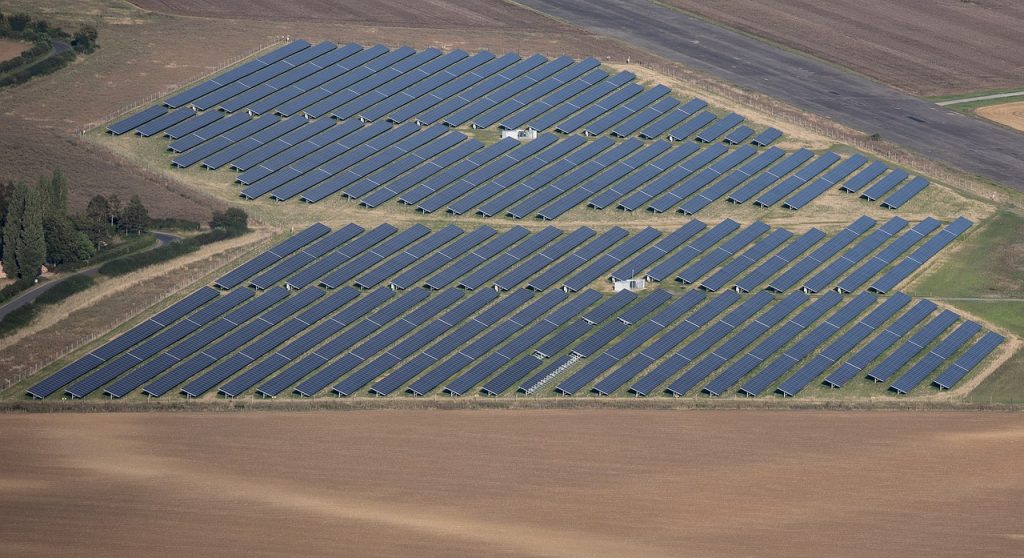
What are solar panels made of?
At their core, solar panels are made up of several individual solar cells, which are themselves made up of layers of silicon, phosphorus, and boron. Silicon is the main ingredient; it’s a semiconductor (i.e., it conducts electricity) and is widely used in familiar electronic applications such as computers, smartphones, and power supplies.
These materials are arranged in an intricate lattice and are housed in a glass package. Their arrangement is similar to that of a battery, with one layer being positive and the other being negative. This creates an electric field that enables the solar panel to work as intended.
How do solar panels generate electricity?
When the sun’s photons strike a solar panel, they are absorbed and induce an electrical current in three steps:
- Energy from photons hitting the panels knocks electrons out of their atomic orbits.
- These electrons are released into the electric field created by the solar cells.
- This field pulls free electrons into a directional current, thus creating DC energy.
This process is known as the photovoltaic effect, and it’s where the cells of the solar panel get the name photovoltaic solar cells from.
Unlike DC energy, which flows in one direction, AC energy periodically changes its direction. DC energy can’t be used by most domestic and commercial applications, nor can it be fed into the power grid.
While one-directional DC energy is great for certain applications (think anything that runs on battery power, such as smartphones, torches, and electric cars), it’s not so good for high-voltage applications such as fridges, dishwashers, and washing machines.
Therefore, for the DC electricity generated by solar panels to be useful, it must be converted into alternating current (AC) electricity. This is achieved using an electrical converter, which converts DC energy into AC energy that home appliances can use.
What does a microinverter do?
A microinverter is a plug-and-play device that attaches to solar modules within a solar panel installation. It converts the DC electricity generated by solar modules into useful AC electricity. This AC electricity can then be used by your home appliances or sent to a centralized power grid in the case of a surplus.
In contrast to a central or string inverter that connects to and serves a series of solar panels, microinverters connect to individual panels in isolation. This means that if one panel is negatively affected (e.g., in the case of a breakdown or less sun exposure), other panels in the system will remain unaffected.
Microinverters are module-level inverters, and each panel is independently connected with the microinverter. The efficiency of the whole system is 5-22% higher than traditional string/central inverters. As with any technical installation, it’s important to match high-quality microinverter hardware with high-quality panels. This will ensure maximum cost savings. Hoymiles inverters boast 96.5 and 99.8 percent for CEC weighted efficiency and MPPT efficiency respectively.
HOW LONG DO SOLAR PANELS LAST?
The world’s appetite for solar energy is growing fast. It’s free, plentiful, and, when scientists work out how to harvest and store it better, it could power the entire world.
Part of the appeal of solar power is the longevity of solar panels; studies have shown us that solar installations are capable of operating for around 20 to 25 years at their ‘optimal’ efficiency, so long as they are looked after.
This isn’t to say that a solar installation will simply stop working after 20 to 25 years have elapsed, though. This is merely the amount of time that most manufacturers warranty their solar modules for.
Solar panels will continue to work and produce electricity after this warrantied time has elapsed, albeit at a rate below what is considered optimal. Manufacturers also can’t guarantee the actual level of output of their solar modules outside of this warranty period. This all boils down to degradation; the naturally occurring materials such as silicon that make up solar panels break down and become less efficient over time.
Researchers are finding ways to combat this, though. The latest innovations and advancements in the field of solar energy generation have slowed this degradation down to a median rate of around 0.5 percent per year in the case of new solar modules, making now a better time than ever to start adopting them.
If you’d like to learn more about solar adoption for your home or business, get in touch with our expert team for an obligation-free chat!

